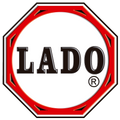Until now, for example, it was considered that the first syllables that babies babble around seven months of life were universal, "however, now there are more studies that show that these first sounds are also influenced by the language of the environment." And he even cites a study that has shown that even the cries of newborns already present certain melodic characteristics of their mother tongue.
What does exist some agreement is that the first syllables that will come out of your mouth are made up of a group of consonants and vowels, generally open and bilabial. They are usually duplicated phonemes, ga-ga, ba-ba, pa-pa, ma-ma, with which the child 'plays' and repeats rhythmically before acquiring more complexity. "It has been observed that the first sounds that children emit in most of the world's languages are also the most frequent in these languages," explains Montserrat Souto, from the University of Santiago de Compostela. "And that cannot be a mere coincidence."
understand before pronouncing
What is not very clear , as the speech therapist Alfonso Igualada adds for his part, is whether these first phonemes have a 'simple' motor origin ("marked by the innate movements of opening and closing the mouth to suck") or are part of something more 'elaborated', with communicative intention."They are not necessarily conflicting theories," he clarifies; It is probably a combination of factors in which, that is clear, the environment plays a fundamental role. "We cannot forget that two do not communicate if one does not want to and the interaction of the environment with the child is essential," he points out. And sometimes, it is the environment itself, Igualada jokes, the one that is so predisposed to listen to the child speak "that we give enormous importance to everything they do" and we think we hear mom and dad from their mouths as soon as possible.
For this reason, he recommends, it is not convenient to be obsessed with whether the child speaks or at what age he does so (“there may be a four or five month gap between one another”), but to observe him as a whole. "Perhaps he is going through a stage in which he is developing his motor skills more, for example," says Igualada. “In addition, children understand many words before being able to produce them,” recalls Souto.
"Parents should know that there is a sequence, an order in the acquisition of language (just like they crawl before learning to walk)," recalls psychologist Carlos Gómez-Ariza from the University of Jaén. “But within this general norm there is a lot of variability,” he reassures, “and the fact that one child takes a little longer than another to produce words does not have to represent a delay in speech. Perhaps he is receiving few stimuli from his environment, ”says this specialist; “Or he is a silent child who is assimilating the language before starting to produce it”, adds Souto.
stories and songs

Instead of talking to them as if they were babies, Prieto recommends, adults can use other tools such as rhymes, verses, songs and stories, which familiarize the baby with language in a more natural and playful way at the same time. “If a child spends 10 hours with an older person, or one who doesn't even speak their language,” explains García-Ariza, “it is normal for their development to slow down a bit. But that doesn't mean I have a problem." In Souto's opinion, taking them to a nursery can be a good stimulus in these cases.
language milestones
Following the 'Manual of Child Psychology' by Rosa Mª Rivas Torres and Eva Mª Taboada Ares, Montserrat Souto explains the stages that, as a general rule, children follow in their language acquisition:- Prelinguistic stage (0-1 year): it is normal for children not to emit any words.
- Holophrastic (1-2 years): they emit their first words, they are the meaning of a sentence ('agua' can mean 'mom, give me water').
- Syntactic (2-4 years): although there is a lot of fluctuation at this stage, they can begin to say sentences with two or three words ('mama agua'). The first words are usually nouns and verbs; and only later will the adjectives, adverbs and prepositions appear.
- Advanced (4-6 years): at this time the perfection of the language occurs in all areas: phonetics improves, their vocabulary expands and the length of sentences increases. This is where the most complex learning takes place in all languages.


Lo señalado anteriormente es muy cierto, ya que el estímulo del entorno marcara la diferencia. Gracias
Gracias Paola, cualquier cosa en la que podamos ayudarte no dudes en comentárnoslo. Saludos
Leave a comment